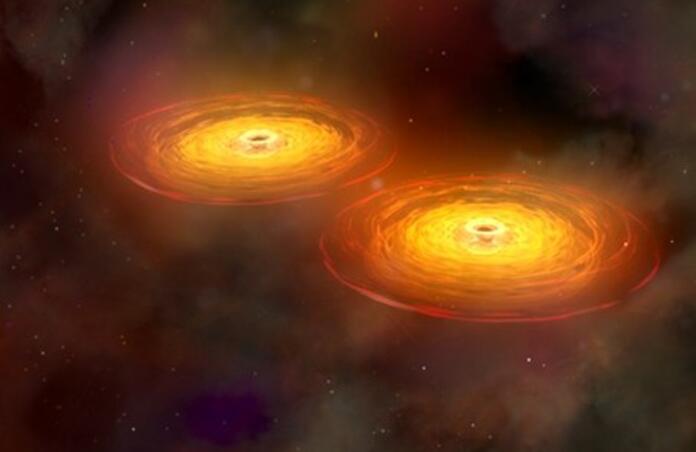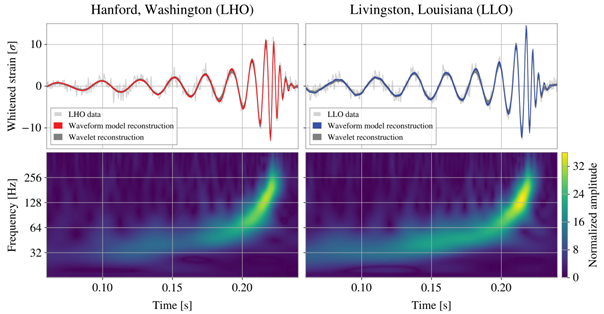Black Hole Merger Validates Core Predictions of General Relativity

A central prediction of Einstein’s theory of general relativity is that black holes are quite simple bodies. Their nature can be fully described by just their mass and their spin-rate. This solution, known as the Kerr metric, implies that all other information is lost behind the event horizon. Another core prediction came about much later, in that of Hawking’s area law, which states that the surface area of black hole horizons cannot decrease over time. Yet until recently, observational tests of these predictions remained tentative, limited by the faintness of gravitational-wave signals.
Now, a new study by the LIGO–Virgo–KAGRA collaboration presents the clearest confirmation yet of both Kerr black hole behaviour and the Hawking area law. The work centres on GW250114, a gravitational-wave signal recorded on January 14, 2025, by the two LIGO detectors in the United States. This signal was produced when two nearly identical black holes, each about 33 times the mass of the Sun (M☉), merged. The resulting remnant weighed in at around 63 M☉ and was noted to be spinning at a rate of ~100 revolutions per second. Their data was recorded with a signal-to-noise ratio of 80, far stronger than any previous detection, which allowed them to better probe the properties of the merger as well as the post-merger remnant.

When two black holes collide, the merger proceeds in three main stages. First, as black holes approach, they begin to in-spiral towards a common centre, as energy is radiated away in the form of gravitational waves. This is followed by the merger itself, which is typically a violent process. Finally, the black hole settles into a calmer state, during a process known as the ringdown. During this process, the black hole will continue to emit faint gravitational waves at distinct frequencies, known as the quasinormal modes. According to general relativity, the exact frequency and damping of these tones are determined entirely by the mass and spin of a Kerr black hole. Hence, measuring these provides a direct test of whether astrophysical black holes truly follow the Kerr description.
To probe this, the team isolated the post-merger portion of GW250114’s signal and modelled it as a sum of exponentially decaying waveforms, each corresponding to a quasinormal mode. In doing this, they managed to isolate both the fundamental mode, as well as the first overtone. By itself, the fundamental mode is the easiest to detect, as it has the strongest amplitude but can only inform one of the mass and spin of the post-merger remnant. However, the addition of the fainter first overtone allowed the team to check whether both modes were consistent with the same mass and spin.
Both modes matched the predictions of the Kerr spectrum to within ~30% uncertainty. This marks the first time such features have been unambiguously observed, strengthening the case that real black holes are indeed the simple Kerr objects predicted by Einstein.
The same data also allowed the researchers to test Hawking’s area law. By measuring the component black holes’ properties before merger and the remnant’s properties after, they calculated the event horizon areas in both states. They found that the final black hole’s horizon was consistently larger than the sum of the initial horizons, with significance exceeding 3.5σ across multiple analyses. This strongly supports Hawking’s prediction that black holes always move towards a higher total area.
However, while two quasinormal modes were clearly observed, the team suspect that more sensitive detectors could reveal additional tones, enabling true black hole spectroscopy. Likewise, expanding these analyses to a larger set of high-quality events will allow tighter constraints on possible deviations from general relativity. They remain optimistic that the next generation of observational facilities will enable the necessary sensitivity to probe these bodies even further.
--
Journal Source: A.G. Abac et al, GW250114: Testing Hawking’s Area Law and the Kerr Nature of Black Holes, Physical Review Letter, Vol. 135, (2025), DOI: https://doi.org/10.1103/kw5g-d732
Cover Image Credit: NASA/CXC/A.Hobart
